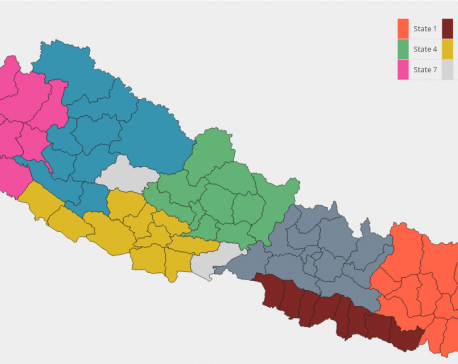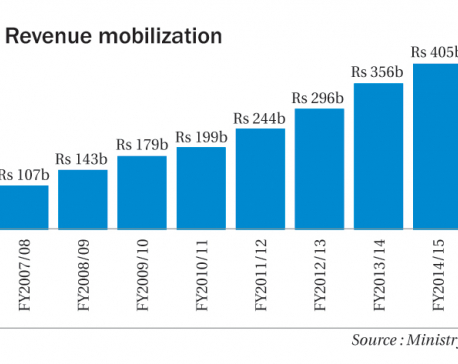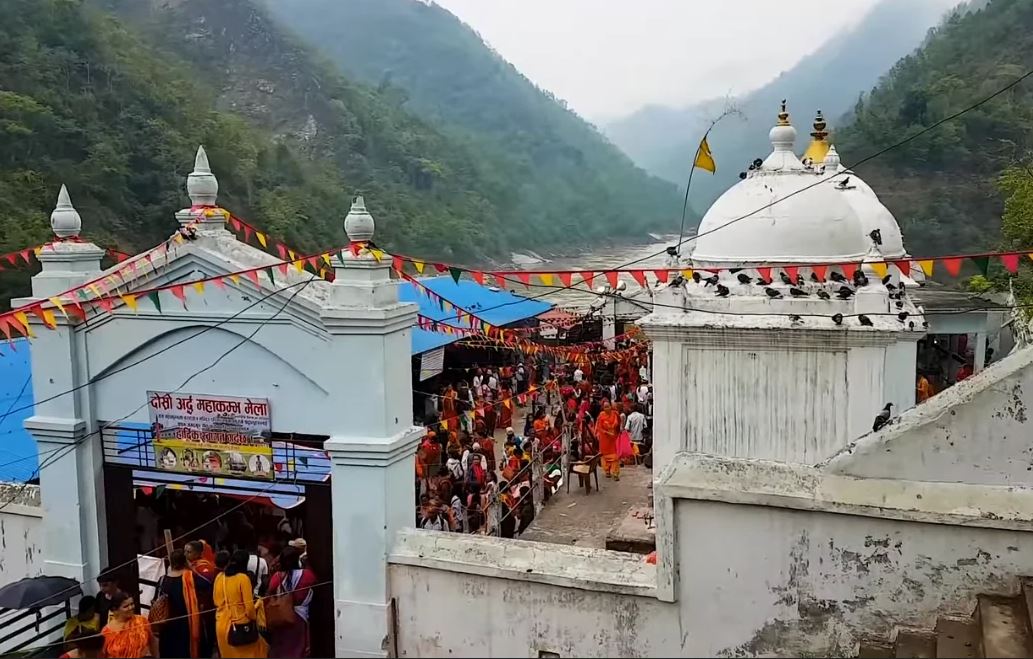
OR
Report and Reality: Melamchi environment plan only on paper
Published On: March 8, 2017 12:50 AM NPT By: Republica | @RepublicaNepal
Lack of proper implementation a threat to public health
KATHMANDU, March 8: Kathmandu Upatyaka Khanepani Limited (KUKL) had prepared an Environmental Management Plan (EMP) in 2014 with a view to identifying and mitigating environmental pollution resulting from its Melamchi Water Supply Project (MWSP) during various stages of the project implementation. Though the report had laid out stringent environment protection plans, lack of proper implementation has become a serious threat to the health of the general public.
The report identified the problem of dust thrown up by road excavations and other construction activities and recommended mitigation measures such as the sprinkling of water. Although the Project Implementation Directorate (PID) has claimed that they are sprinkling water regularly on the busier road stretches, the locals of some of the affected areas said such activities are not at all regular.
Pedestrians, motorists and people from various walks of life are suffering from the dust pollution caused by MWSP's pipe-laying activities along the major road stretches and inner roads of Kathmandu Valley. Suraj Raj Pandey, who regularly walks the Chabahil road stretch, is among thousands suffering from the resulting health hazards.
"I have developed respiratory problems just from walking the Chabahil – Gopi Krishna stretch on a daily basis. It's nearly suffocating due to the thick amount of dust particles," said Pandey, a local of Dhumbarahi. "I don't see water sprinkling being carried out on a regular basis. And they don't do it during the afternoon when the dust affects the maximum number of pedestrians and motorists."
KUKL's PID started the pipe-laying work on teeming Chabahil road some weeks ago. However, the work is being delayed and there are no signs of progress now. This has not only caused dust pollution but also resulted in frequent traffic snarls as movement on the road is limited to a narrow section spared by PID's work.
Although PID has acknowledged the environmental pollution, they downplayed the health hazards.
In a recent press conference, PID/KUKL Project Director Tiresh Prasad Khatri said their activities have contributed only a little to the dust pollution in the Valley. "And besides, our activities only generate PM 10 pollutants, which are not very harmful to human health," he added.
However, health experts disagree. "Though PID's road digging activities generate only PM 10 pollutants, the accompanying traffic snarls slow down vehicular movement, which in turn results in high concentrations of PM 2.5 pollutants that are a real hazard to humans," said Dr Khem Bahadur Karki, member secretary of Nepal Health Research Council.
"Melamchi Project work is undoubtedly the major contributor to dust pollution in the Valley. It has become unbearable. Such irresponsibility has led to long-term impact on human health," added Dr Karki.
A total of $795,860 (or Rs 8.5 million) has been allocated for dealing with the environmental cost of the Melamchi Project, states the EMP report. The budget includes the cost of a five-year public awareness campaign, monitoring of the EMP, and conducting an Archaeological Impact Assessment if required.
Activists Jagannath Lamichhane, Dibyesh Giri and Priyasha Maharjan had filed a Right to Information (RTI) petition demanding complete information on the environmental and public health hazards caused by the pipe-laying work. They wanted to learn whether the contractors were complying with their contracts. Though some reports were made available, PID has not provided reports on the monitoring of EMP.
"Though PID has presented a strong proposal to mitigate the environmental pollution caused by its work, the public has been cheated in the implementation aspect," said Lamichhane, one of the activists.
You May Like This

Only 21 of 174 assigned employees report for work in Province-2
DHANUSHA, Feb 11: The works of the province legislature and executive bodies have been affected as not all the civil servants... Read More...

Priority for agro-product exports limited to paper only
KATHMANDU, Jan 25: Boosting agricultural production and exports for narrowing the trade deficit are priorities in all periodic plans and fiscal... Read More...

Revenue only the bright spot in govt's economic report card
KATHMANDU, July 20: The government achieved its revenue collection targets in Fiscal Year 2015/16. Apart from this, the government, however,... Read More...

Just In
- Over 200,000 devotees throng Maha Kumbha Mela at Barahakshetra
- Indians vote in the first phase of the world’s largest election as Modi seeks a third term
- Kushal Dixit selected for London Marathon
- Nepal faces Hong Kong today for ACC Emerging Teams Asia Cup
- 286 new industries registered in Nepal in first nine months of current FY, attracting Rs 165 billion investment
- UML's National Convention Representatives Council meeting today
- Gandaki Province CM assigns ministerial portfolios to Hari Bahadur Chuman and Deepak Manange
- 352 climbers obtain permits to ascend Mount Everest this season






_20220508065243.jpg)











Leave A Comment